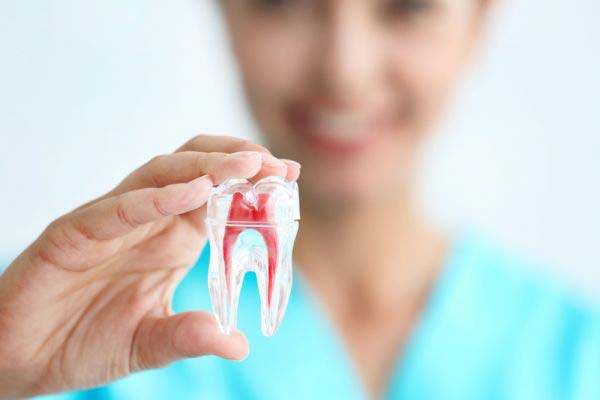Natural-Looking Dental Implant Crowns for Front Teeth

A dental implant crown can make a huge difference in your day-to-day existence. Just ask anyone that has had to go through life with a missing front tooth. It is the reason why dental crowns are such a popular tooth restoration option –– they can replace a lost tooth and blend in with the remaining natural teeth.
Dental crowns are commonly used to restore badly-damaged natural teeth. The variant that is used to replace missing teeth attaches to a dental implant instead of a natural tooth. As such, a dental implant crown will have a slightly different construction compared to the type of crown that sits on a natural tooth.
Front teeth, back teeth and dental implant crowns
A dental implant crown that is designed to replace a molar can afford to have some ‘imperfections’ that allow it to better attach to a dental implant. Not so with a crown for the front teeth. Most patients prefer their crowns to look perfect and natural, with no discolorations or visible holes. So, how does a patient choose a dental implant crown that they can be proud of? Here are a few guidelines.
Choosing a suitable crown for a front tooth
The first thing that people notice about an individual they have never met before is that person’s appearance. An ‘off’ smile makes just as big an impression as a dazzling one. Here are the rules to remember when choosing an implant-supported crown that will create an appealing set of teeth:
1. The material will determine the color of the crown
Metallic crowns stand out, especially when placed on a front tooth. That look has gone out of style now, so it is unlikely that a patient chooses a gold crown or a silver crown for their front teeth. Unless they are the sort of free spirit that likes to make a statement with their smile.
Even a porcelain crown that is fused with metal has a dark, metallic band of color at its base. The dark color at the gum line is actually the metallic part of the porcelain-and-metal crown. Most, patients will avoid this type of crown because the band of metal at its base still manages to catch the eye.
Patients often choose tooth-colored materials for their crowns. The most common of these is porcelain, which is popular because it is fairly tough. Porcelain is also smooth and translucent, just like the enamel of a natural tooth, making porcelain crowns the most popular choice for natural-looking implant-supported crowns.
2. How the crown attaches to the abutment affects how natural it looks
An implant-supported crown is fastened onto an abutment in one of two ways. The first way is with dental cement, which is tooth-colored. A cement-retained implant looks very natural, compared to the second option, a crown with multiple components.
The second type of crown attaches to an abutment with screws, which are noticeable. This option is usually used for the molars, and rarely for the front teeth.
An all-porcelain crown is the way to go if you want a natural-looking smile
Our dentist has lots of experience placing dental implants for cosmetic and functional reasons. Schedule an appointment with our New York clinic and start the process of making your smile complete.
Let's get started…
Request an appointment here: https://www.newyorkdentaloffice.com or call New York Dental Office at (212) 548-3261 for an appointment in our New York office.
Check out what others are saying about our services on Yelp: Read our Yelp reviews.
Recent Posts
Dental restoration services, formally known as restorative dentistry, are paramount to a person’s overall oral health. Dental restoration is the process of repairing teeth and restoring them to their original state, hence the name. This article will explore how restorative dentistry can prevent health problems, from tooth decay to misalignment and more.Decay, infection, and other…
If you have ever felt self-conscious about your teeth and considered seeing a cosmetic dentist, you are not alone. Americans spend thousands of dollars trying to enhance their smiles each year. However, for a truly transformative look that is also safe for your teeth, it is recommended that you see a cosmetic dentist.A cosmetic dentist…
Your dentist can provide a dental restoration that can restore your damaged tooth. A broken tooth can cause pain and discomfort. It can prevent you from eating, smiling, and speaking. Knowing what restorations are available can help you decide which one suits you the most. Here are the details about each dental restoration that can…
A dental restoration can stop the progress of dental problems from decay or injury. Dental fillings can treat mild to moderate cavities. Your dentist will assess your teeth and see how many need fillings. Here are the things to expect before you get this dental restoration.The dentist will examine the patient’s teeth and see how…



